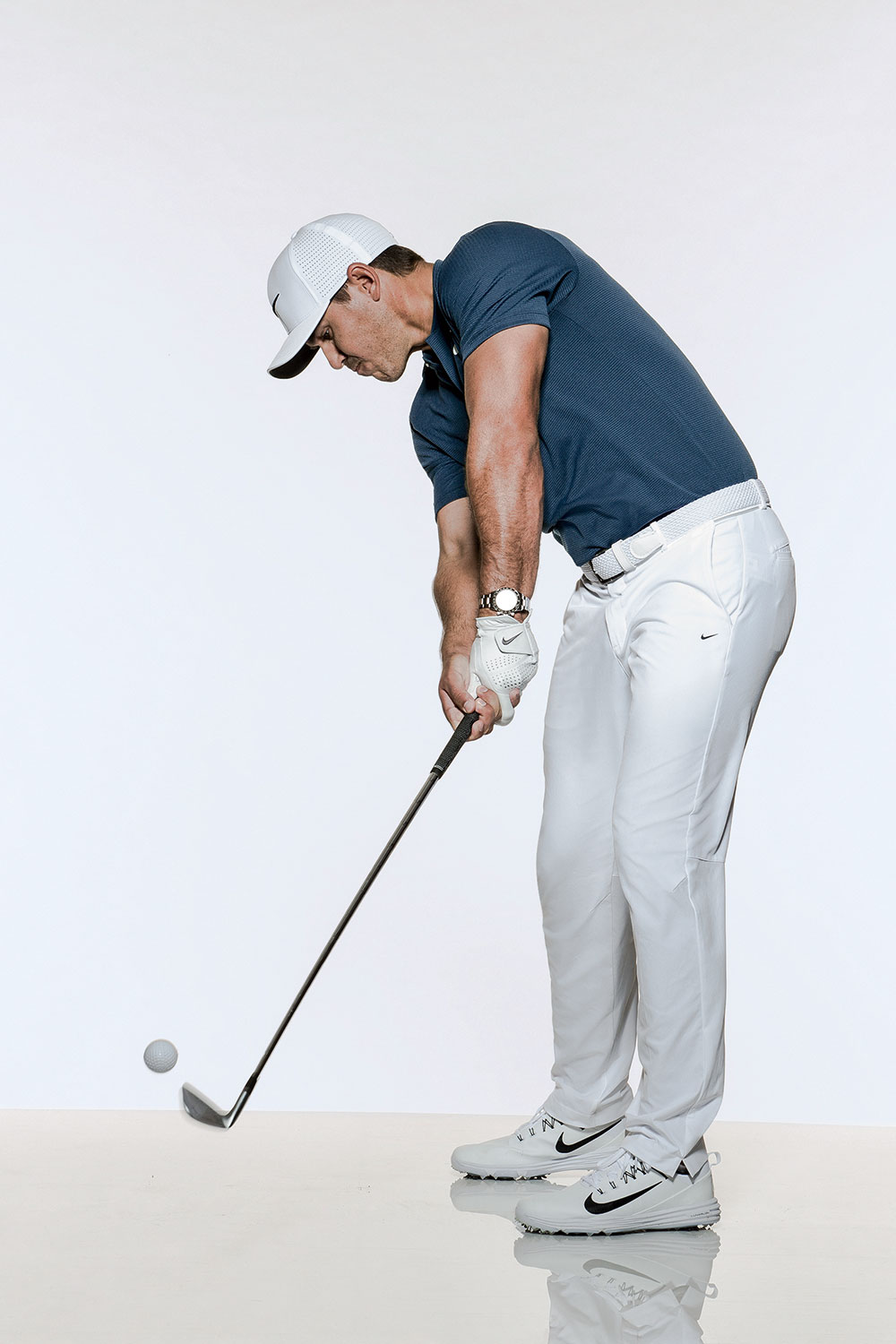On the Tuesday of US Open week, I was with my short-game coach, Pete Cowen. He pulled me aside and said he wouldn’t work with me until we talked. That’s when he told me there was no way I could win the way I was going about things. It was harsh, but I’m the type of person that if you tell me I can’t do something, I’ll find a way to do it. And that’s what I did at the US Open. I took his talk as a challenge, got myself super focused on what I needed to do on each and every shot, stayed patient, and ended up winning my first Major. A big reason for that was my iron play. I hit 86 percent of the greens in regulation that week. That’s 62 out of 72. When you’re consistently putting for birdie and not trying to save par, that’s a huge advantage at the US Open.
Most people focus on how hard I swing my clubs as a reason for my success, but there are some other things about my swing that are beneficial for both power and accuracy – and they can help you, too – especially if you’re struggling with consistency. Hitting savage irons sounds cool. Make it a reality.
– Ron Kaspriske
Precision
I’ve been working on the same things with my full-swing coach, Claude Harmon III, for the past four years. I drew the ball in college but knew a fade is easier to control. The misses are never as bad. My technique for curving it a little left to right is to set up open to my target with my feet, minimise clubface rotation back and down, and turn hard with my body well past impact. I want my chest facing 45 degrees left of my target at the end of the swing.
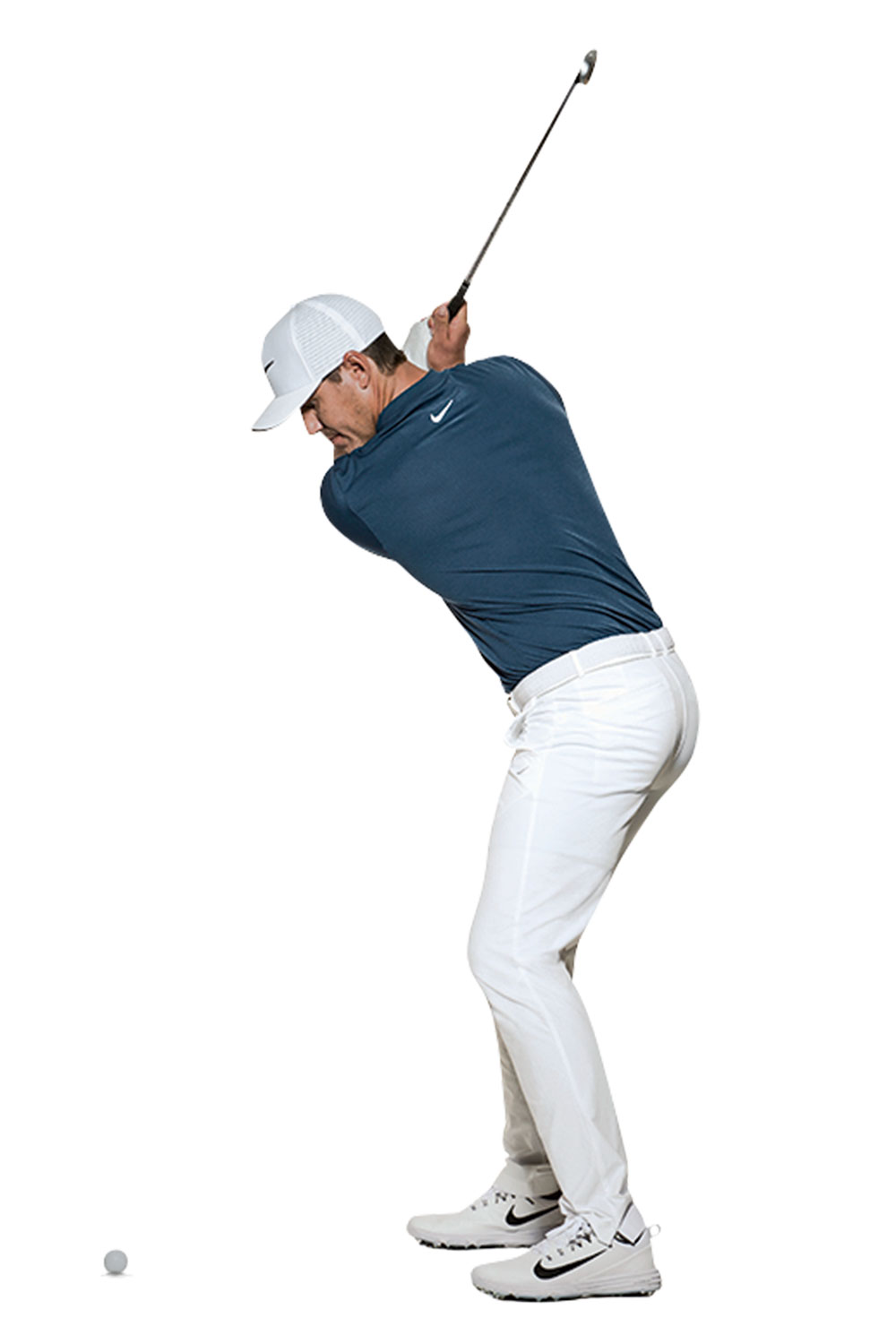
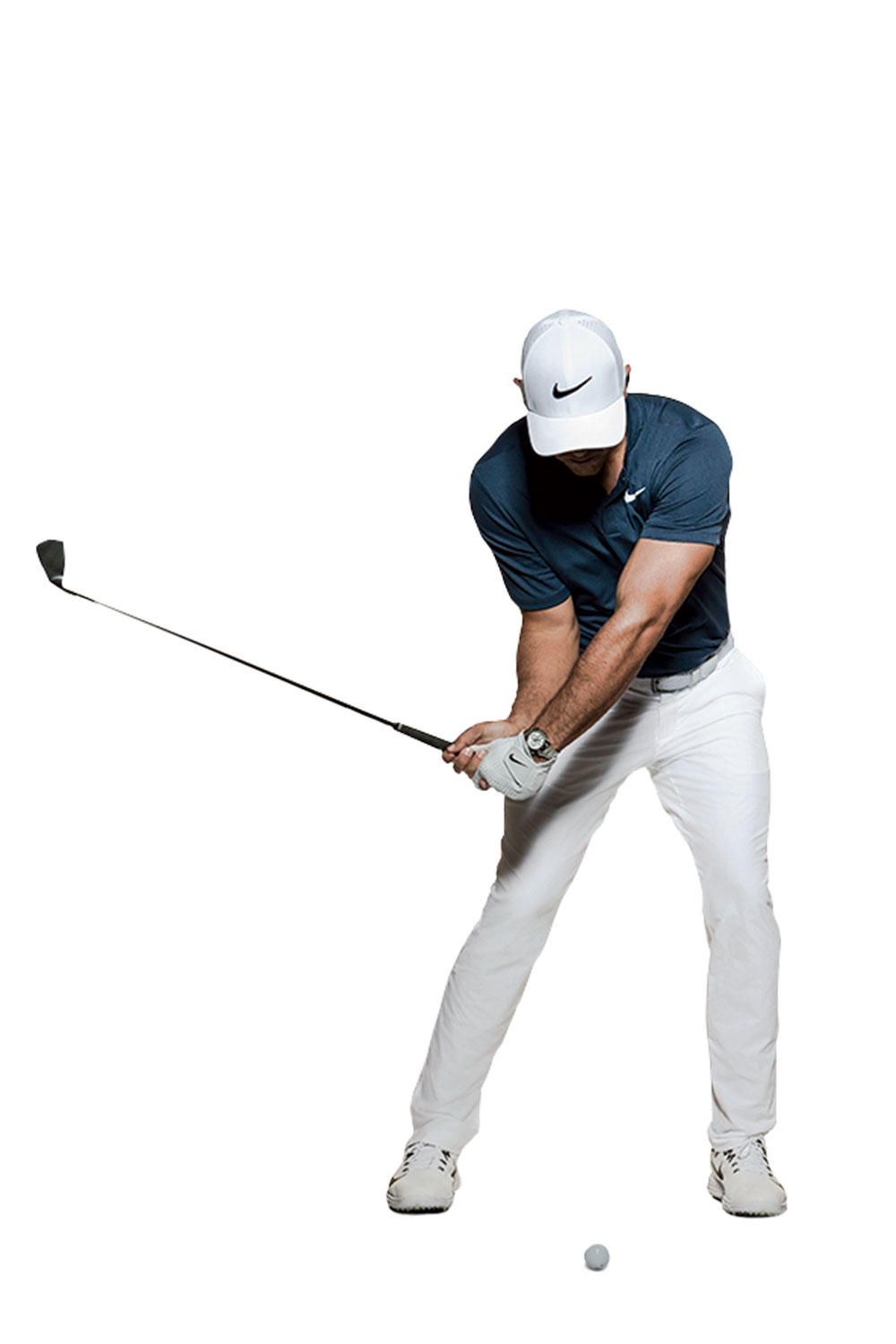
That’s the simplest way to explain what I do. Now come a few important details. I take the club back on a steeper angle than I swing down. For those of you who can’t swing fast, taking the club back wide and high [top left] creates leverage and more power. I shallow the club coming down with a lateral shift of my hips towards the target [top right]. I also take the club back with a bowed left wrist and keep it bowed almost all the way through impact [below]. The bow keeps the clubface from opening, so I don’t have to worry about face rotation and timing. My shots are more accurate if I maintain the bow until the moment when I release the club through impact. Then it goes from closed to slightly open, helping to produce that fade. There’s some split-second hand action going on as I strike the ball, which I’ll explain below.
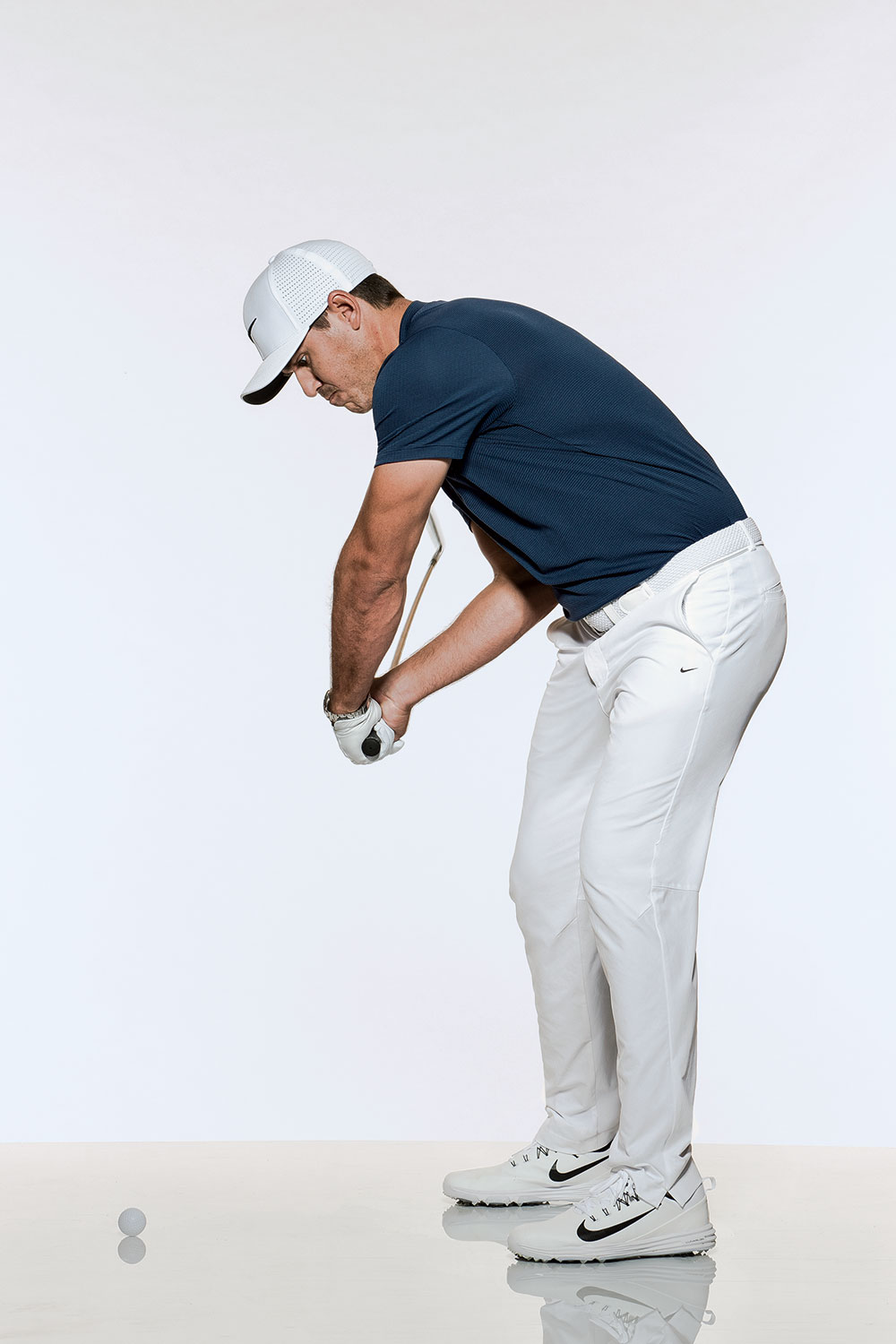
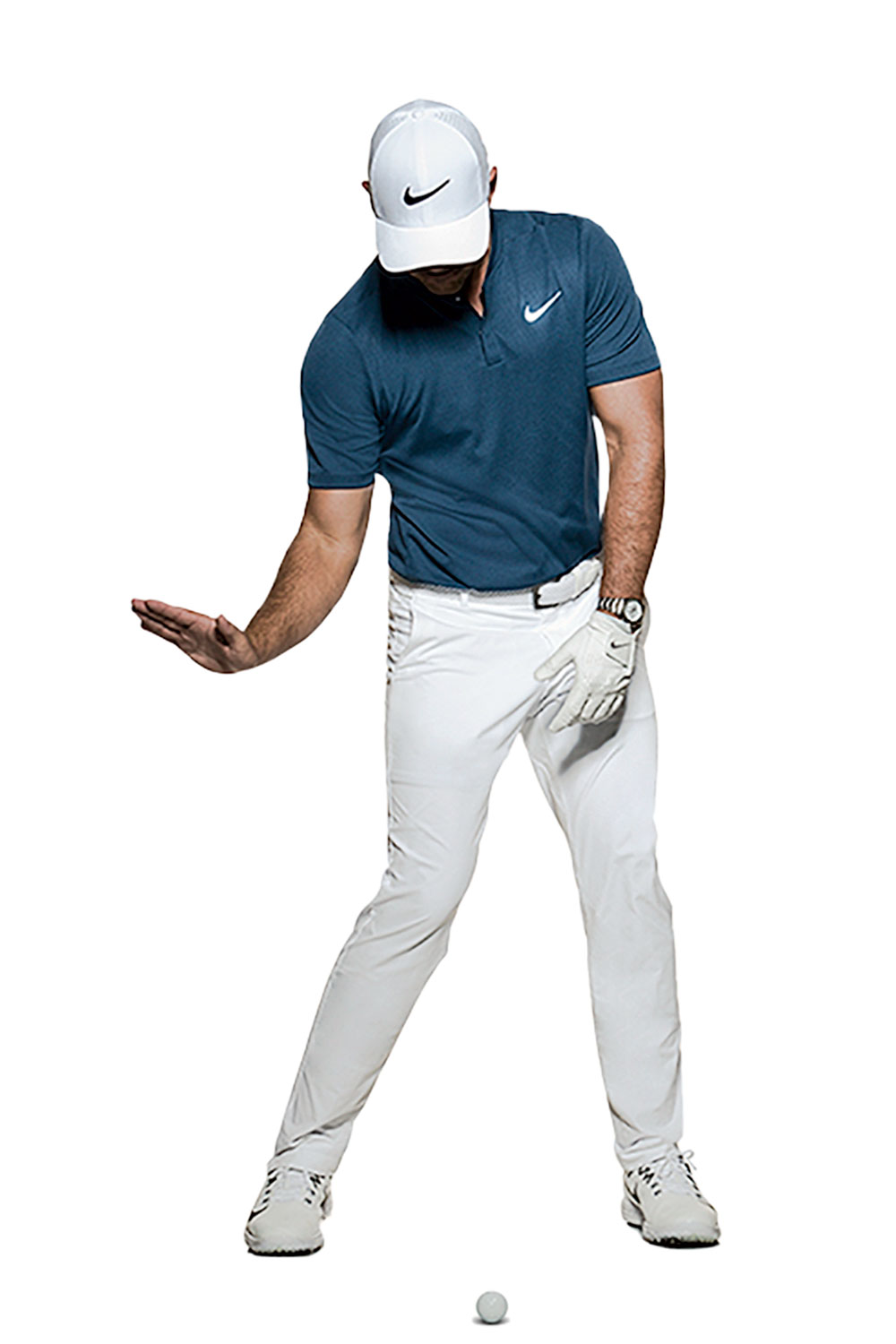 Power
Power
I put the club down for a second to show you what my right hand – the dominant hand – is doing to create a fade as well as add more power to the hit. I mentioned earlier how much my body rotates in relation to the target. That’s really important, so don’t just focus on your right-hand movement through impact. Turn your body, too. Let it lead the way. The more you rotate, the better off you’ll be. OK, with that said, swinging down with a bowed left wrist means your right palm will be facing down [left]. Then, as the club is striking the ball, let the right wrist release like you’re throwing a ball sidearm or skipping a stone [below]. This opens the clubface just enough to put a little fade spin on the ball, and it gathers more speed for the hit, just like cracking a whip. So if you put it all together – open stance, wide-and-high backswing, bowed left wrist, hip bump towards the target, good body rotation and a sidearm release of the right hand through impact – you’ve got my swing down. Too much to handle right away? Understood. But the good thing is, you can work on any one of these things and start seeing quality iron shots. Just blend in the other elements as you get better. My max with a 7-iron is 215 yards (197m). See how far – and straight – you can hit one.
